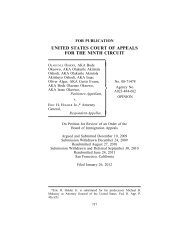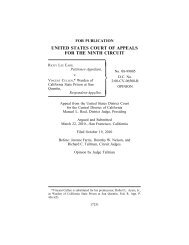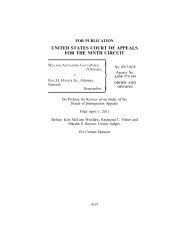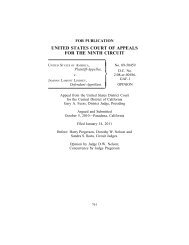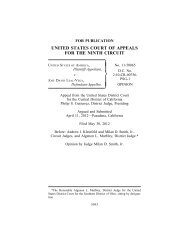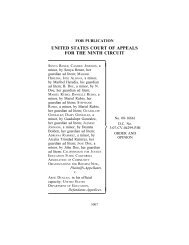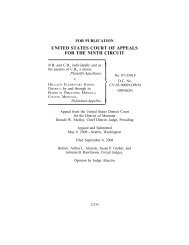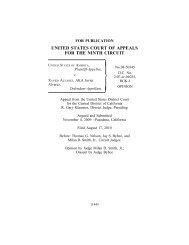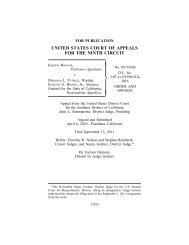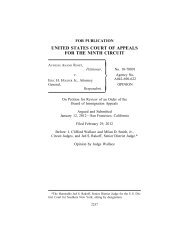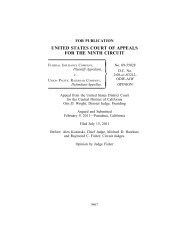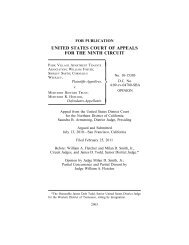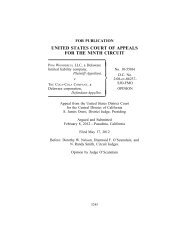UNITED STATES COURT OF APPEALS FOR THE NINTH CIRCUIT
UNITED STATES COURT OF APPEALS FOR THE NINTH CIRCUIT
UNITED STATES COURT OF APPEALS FOR THE NINTH CIRCUIT
You also want an ePaper? Increase the reach of your titles
YUMPU automatically turns print PDFs into web optimized ePapers that Google loves.
9752 PAYNE v. PENINSULA SCHOOL DISTRICT<br />
remedies before seeking parallel relief under the ADA. Second,<br />
the IDEA requires exhaustion in cases where a plaintiff<br />
seeks prospective injunctive relief to alter an IEP or the educational<br />
placement of a disabled student. As with the previous<br />
point, § 1415(l) bars plaintiffs from seeking relief that is<br />
available to them under the IDEA, even if the plaintiffs have<br />
urged the court to craft the remedy from a different federal<br />
statute. Third, exhaustion is required in cases where a plaintiff<br />
is seeking to enforce rights that arise as a result of a denial of<br />
a free appropriate public education, whether pled as an IDEA<br />
claim or any other claim that relies on the denial of a FAPE<br />
to provide the basis for the cause of action (for instance, a<br />
claim for damages under § 504 of the Rehabilitation Act of<br />
1973, 29 U.S.C. § 794, premised on a denial of a FAPE).<br />
Such claims arise under either the IDEA (if the IDEA violation<br />
is alleged directly) or its substantive standards (if a § 504<br />
claim is premised on a violation of the IDEA), so the relief<br />
follows directly from the IDEA and is therefore “available<br />
under this subchapter.” 20 U.S.C. § 1415(l). We think that<br />
these situations encompass cases in which “[b]oth the genesis<br />
and the manifestations of the problem are educational.” Blanchard,<br />
420 F.3d at 921 (quoting Charlie F. v. Bd. of Educ.,<br />
98 F.3d 989, 993 (7th Cir. 1996)) (alteration in original).<br />
This approach is consistent with our understanding that the<br />
exhaustion provision is designed to “allow[ ] for the exercise<br />
of discretion and educational expertise by state and local<br />
agencies, afford[ ] full exploration of technical educational<br />
issues, further[ ] development of a complete factual record,<br />
and promote[ ] judicial efficiency by giving . . . agencies the<br />
first opportunity to correct shortcomings in their educational<br />
programs for disabled children.” Hoeft, 967 F.2d at 1303. The<br />
exhaustion requirement is intended to prevent courts from acting<br />
as ersatz school administrators and making what should<br />
be expert determinations about the best way to educate disabled<br />
students. At the same time, it is not intended to temporarily<br />
shield school officials from all liability for conduct that<br />
violates constitutional and statutory rights that exist indepen-



